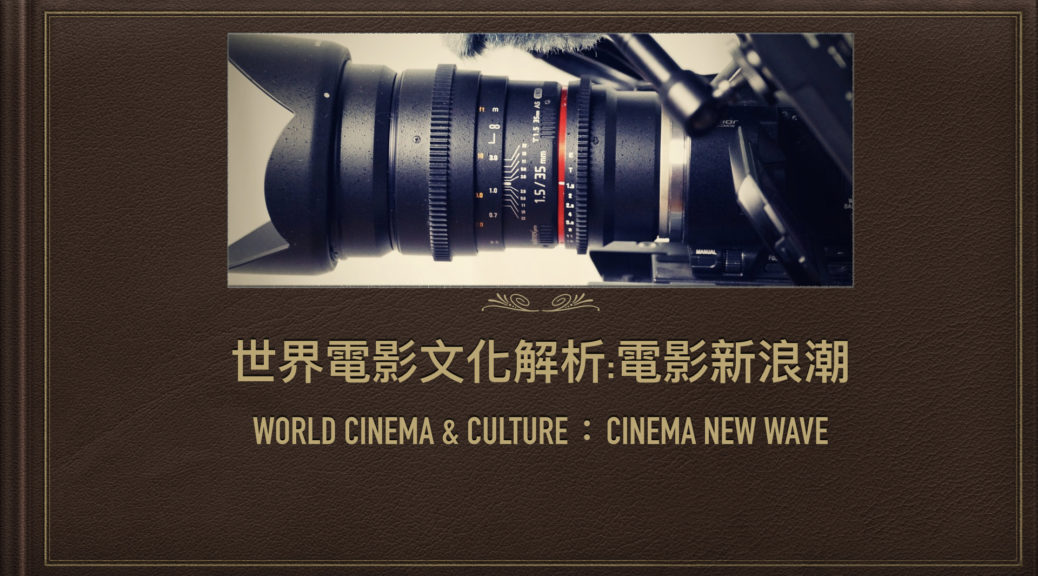60年代法國電影知識份子,借鑒義大利新寫實主義,開始挑戰傳統好萊塢的說故事模式,用低成本、創意的鏡頭描寫社會現狀,其中以高達(Jean-Luc Godard)、楚浮(Francois Truffaut)為代表,分別拍攝了《斷了氣Breathless》與《四百擊The 400 Blow》影史上稱為法國新浪潮。
In 1960s, Lean-Luc Godard and Francois Truffaut started French New Wave. They adapted Italian Neorealism to their own films and created unique low-budget film style.
日本則在二戰後,出了家庭倫理劇的大師小津安二郎 Yasujiro Ozu,亞洲的隱晦與長鏡頭風格,獨樹一格;而受美國控制的日本電影工業,讓大師黑澤明 Akira Kurosawa 展露頭角,他改編許多歐洲名著,拍成日本史詩片,如《1957 蜘蛛巢城Throne of Blood》,他的作品也被好萊塢給重製成好萊塢版,如《1954七武士 Seven Samurai》改編成《豪勇七蛟龍 Magnificent Seven》。
After World War II, Japan also had 2 great directors, which were Yasujiro Ozu and Akira Kurosawa. Especially, Kurosawa’s epic films even got adapted by Hollywood.
中國電影則是受到政治所影響,從1949毛澤東執政,電影就受到嚴格的規範,直到60年代鬆綁後,才出現如《劉三姐》《早春二月》等較為含蓄的社會主義電影。直到第五代導演 張藝謀 Zhang Yimou《紅高粱Red Sorghum》讓世界注意到中國細膩的電影風格,第六代導演 賈樟柯等,又從大時代的故事,將焦點移向更多市井小民的生活;香港在當時也漸漸發展出功夫與暴力美學類型,成名演員有 李小龍 Bruce Lee、成龍 Jacky Chen等,傑出導演則有 吳宇森John Woo等,而藝術電影則是 王家衛 Wong Kar-Wai 揚名國際。
Chinese cinema kept controlled by politics. In 60s, rules became less strict, so the 5th generation director, Zhang Yimou started to tell subtle socialism stories. Hong Kong, in the mean time, developed a world-wide famous martial art genre.
印度則是亞洲另一個多產的電影工業,有寶萊塢之稱,除了統一的歌舞電影形式,仍有細膩的寫實導演 薩雅吉雷 Satyaijit Ray,其中以他的Apu三部曲1955《小路之歌The Song of the Road》,1957《大河之歌The Unvanquished》和1959《大樹之歌The World of Apu》說著城市與鄉村間的衝突故事。
India, Bollywood, has one of largest film industries in the world. In addition to their unique dance genre, Satyajit Ray is a great realism director, who is famous for his Apu trilogy.
好萊塢也受到新浪潮的影響,用低預算與特殊原創的故事,製作獨具特色的電影,傑出作品有1967《我倆沒有明天 Bonnie and Clyde》, 1969《逍遙騎士Easy Rider》 ,1967《畢業生The Graduate》, 1969《午夜牛郎Midnight Cowboy》 等等。
Hollywood got influenced by the new cinema trend, and started to produce unique and bold films, such as 1967 Bonnie and Clyde or 1967 The Graduate…
下週我們會將放大鏡移至第三世界,瞭解非洲、中美洲等地方,電影人如何找尋自我認同,還有瞭解影評的基本理論,最後討論作業(150字劇情大綱),聽聽大家獨特的故事。
The third world cinema will be our focus for next week. Moreover, we’ll also learn how to write film critics and review everyone’s short film story pitch (150 words).

 New New Yorkers
New New Yorkers






